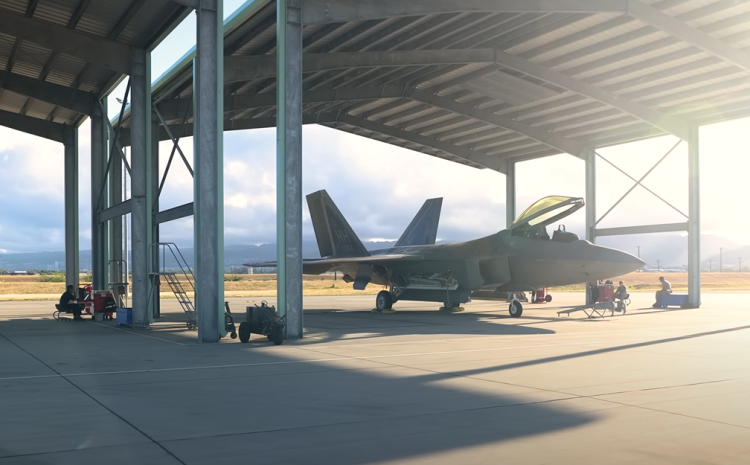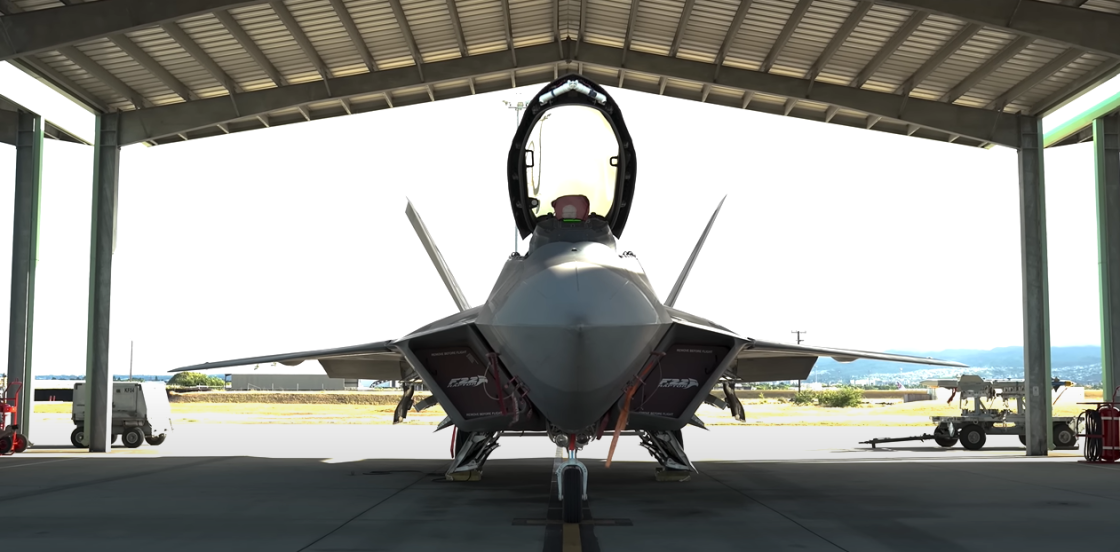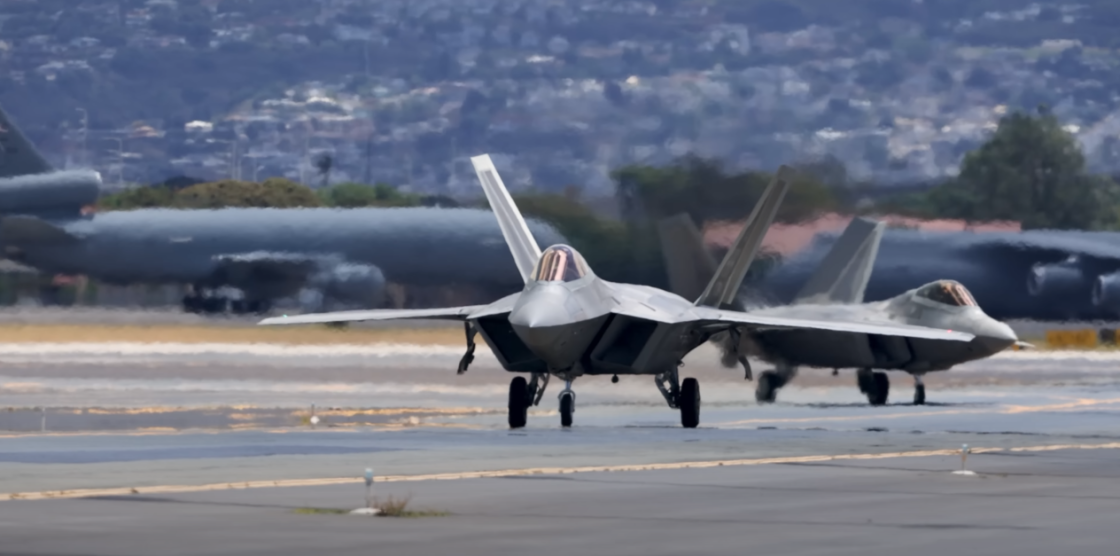Unleashing the Power: Top Speed of the F-22 Raptor

During the 1980s, the United States Air Force (USAF) embarked on the Advanced Tactical Fighter program, aimed at creating a new breed of air superiority fighters to replace the aging F-15 Eagle. This endeavor gave rise to the F-22 Raptor, a remarkable fifth-generation fighter jet collaboratively developed by Lockheed Martin and Boeing. With an unwavering focus on integrating cutting-edge avionics, stealth technology, and exceptional performance capabilities, the F-22 aimed to establish undisputed air superiority in the skies.
What Propels the F-22 Raptor: The Pratt & Whitney F119 Engines
At the heart of the F-22’s remarkable speed lie its two Pratt & Whitney F119-PW-100 turbofan engines, each boasting an impressive maximum thrust of 35,000 pounds. These engines are of the afterburning turbofan type, where they inject additional fuel into the jet pipe downstream of the turbine. This process leads to the ignition of the remaining oxygen, resulting in a significant boost of extra thrust.
A Look at the Engine’s Technology
- Thrust Vectoring: The F119 engines incorporate a two-dimensional thrust vectoring system, meaning the engine nozzles can move in the pitch axis. This allows the pilot to control the direction of the thrust, which significantly enhances maneuverability, particularly in post-stall flight regimes;
- Supercruise Capability: A standout feature of the F119 engine is its supercruise capability. This refers to an aircraft’s ability to sustain supersonic flight without the use of afterburners. With most fighter jets, the use of afterburners dramatically increases fuel consumption, leading to reduced operational range. The F119 engine’s supercruise capability allows the F-22 to fly at supersonic speeds over long distances while conserving fuel;
- Stealth Design: The F119 engines are designed to minimize the F-22’s radar and infrared signature. This is achieved by shielding the engine’s hot components from view and by employing a unique exhaust design that reduces the engine’s heat signature, making it harder for heat-seeking missiles to lock on.
The F-22 Raptor’s Top Speed: Understanding the Numbers
The F-22 Raptor’s maximum speed is around Mach 2.25. This equates to approximately 1,500 mph (2,410 km/h) at altitude. Achieving this top speed involves multiple aircraft systems, including the engines, flight controls, and even the pilot’s skills.
To understand how the F-22 reaches such high speeds, it’s important to examine the aircraft’s design, flight systems, and materials:
- Aerodynamic Design: The F-22’s design reduces drag while maximizing lift. Its shape and structure contribute to its high-speed performance. The wings and tail surfaces are designed for minimal drag at high speeds and high angles of attack. The airframe integrates a combination of swept, tapered, and delta wing configurations that help to achieve high speed and agility;
- Materials and Construction: The aircraft’s structure is made from high-strength, lightweight materials, including titanium alloys, composite materials, and aluminum. These materials can withstand the high temperatures associated with high-speed flight and contribute to the F-22’s impressive thrust-to-weight ratio;
- Flight Control Systems: The Raptor’s advanced flight control systems help maintain stability and control at high speeds. These systems continuously monitor flight conditions and automatically adjust control surfaces to ensure optimal performance.
Supercruise: A Defining Feature

The F-22 Raptor can supercruise at speeds of up to Mach 1.82, approximately 1,220 mph (1,960 km/h). This ability to cruise at supersonic speeds without the use of afterburners distinguishes the F-22 from most other fighter jets.
The importance of supercruise lies in its operational benefits:
- Extended Range: By reducing fuel consumption, supercruise allows the F-22 to fly longer distances without refueling. This extends the aircraft’s operational range and enables the USAF to respond to threats worldwide;
- Quick Response: The supercruise capability enables the F-22 to respond rapidly to emerging threats. It can get to the conflict area faster than other aircraft, giving it a significant advantage in time-sensitive scenarios;
- Stealth: Using afterburners can increase an aircraft’s infrared signature and make it more detectable. By maintaining supersonic speeds without afterburners, the F-22 remains harder to detect, reinforcing its stealth capabilities.
The F-22 Raptor’s Speed in Context
To understand the F-22’s impressive speed, it helps to compare it with other renowned aircraft. Here’s how the F-22 stacks up against other modern fighter jets:
| Aircraft | Top Speed (Mach) | Supercruise Capability |
|---|---|---|
| F-22 Raptor | 2.25 | Yes (Mach 1.82) |
| F-35 Lightning II | 1.60 | No |
| F-16 Fighting Falcon | 2.00 | No |
| Su-57 Felon | 2.00 | Yes (Mach 1.3) |
It’s clear from this comparison that the F-22 stands out not only for its top speed but also for its superior supercruise capability.
The Raptor’s Speed in Real-World Scenarios

The F-22’s speed and supercruise capabilities have real-world implications in various scenarios:
- Interception: The F-22 can rapidly intercept potential threats due to its supercruise capability. This is crucial in scenarios where time is of the essence, such as intercepting enemy aircraft before they reach friendly territory;
- Strike Missions: The F-22’s speed and stealth allow it to penetrate enemy defenses and perform strike missions effectively. Its speed allows it to quickly reach the target, strike, and retreat before enemy defenses can react;
- Dogfighting: In air-to-air combat, speed can be the difference between life and death. The F-22’s high speed and maneuverability give it an edge in dogfights, allowing it to outmaneuver and outrun enemy aircraft.
Conclusion
The F-22 Raptor stands as the pinnacle of advanced aerospace engineering. Its remarkable speed, combined with its unmatched stealth and maneuverability, establishes it as an exceptional air superiority fighter. Notably, the F-22’s capabilities not only showcase the forefront of today’s technological advancements but also set a standard for the future design of fighter aircraft. With the increasing demand for speed and agility in modern aerial warfare, the F-22 serves as a profound testament to the significance of these attributes.
FAQ
The F-22’s top speed is influenced by its powerful Pratt & Whitney F119-PW-100 engines, its aerodynamic design, the materials used in its construction, and its advanced flight control systems.
The F-22 is one of the fastest fighter jets currently in service. Its top speed surpasses that of many other modern fighters, including the F-35 Lightning II and the F-16 Fighting Falcon.
The supercruise capability allows the F-22 to fly at supersonic speeds without the use of afterburners, thereby conserving fuel and increasing operational range. It also helps maintain the aircraft’s stealth by reducing its infrared signature.